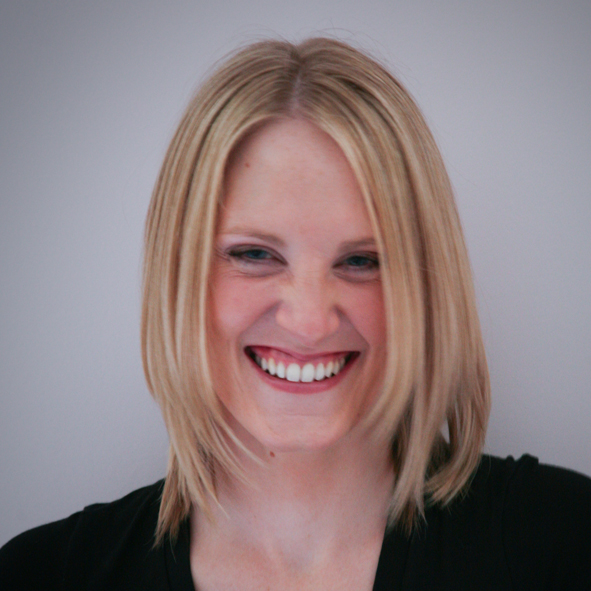Design Effectiveness Awards 2019
It’s not about design. It’s about the difference design makes. Eight Golds, 33 Silvers and 18 Bronze awards won jointly by designer...
Relationship Radar Pulse® does just that. It gives you the advantage of being able to identify potential issues and resolve problems before they escalate – leading to longer, more fruitful relationships. It is an online feedback system that provides agencies with a regular snapshot of the health of client relationships across all touch-points.
Relationship Radar Pulse® is the brain child of RAM’s founding partners Simon Rhind-Tutt and Carey Evans, two of the most respected marketing/client servicing brains in the industry.
Their extensive experience in the design and advertising sectors (Grey, Michael Peters, Wickens Tutt Southgate, Young & Rubicam, DMB&B and Lintas) taught them that the key to being a profitable agency was managing the relationships with their clients. Longer, happier relationships lead to better performance, with better outcomes for all. Relationship Radar Pulse® is based around this premise. It has been developed specifically and exclusively for DBA members.
It is an online feedback system that provides agencies with a regular snapshot of the health of your client relationships across all touch-points. A simple survey is sent to your client contacts. It takes them 3-4 minutes to complete. You can then gauge the health of those relationships across all points – from senior marketing contacts to junior brand managers to procurement specialists. You can compare one client with another, or against the group of DBA agencies working with RAM (with confidentiality assured).
 Why not do it yourself?
Why not do it yourself?You get on well with your clients – why not do your own survey you might ask?
“You can’t mark your own homework. You need someone outside being very honest about the state of the relationship and how you can improve. It is the only way to go,” says Andrew Barraclough, Vice President Design, GSK.
GSK is a DBA member through their participation in the DBA Design Leaders Network. They have worked with RAM for a number of years at a detailed level. Watch Andrew’s testimonial in the video below.
There are nine main areas that the survey asks your clients to score:
Prices vary depending on the frequency of your surveys and the number of client recipients. For up to 50 client contacts prices start at just over £3,000, but there is a sliding scale depending on how long you sign up for.
The recommended minimum frequency is twice a year (or once each year for two years) because this enables you to have time to look for improvements and start to understand the impact of your investment. There are cost incentives for committing to multiple busts upfront. However, there is no harm in dipping your toe in to start with. The data dashboard, and the report you receive will give you an honest insight into how you are viewed by your clients.
Managing to retain your clients for longer is the return on your investment. We all know how expensive it is finding new clients. It is far more cost effective to keep hold of the ones you already have.
Read more about Relationship Audits & Management.
To discuss the service in more detail and which options would be best for your business contact RAM directly stating that your business is a DBA member:
Carey Evans
020 7287 1737
carey.evans@relationshipaudits.com
www.relationshipaudits.com









Image credits: © Cjwhitewine Dreamstime.com | © Ben Broomfield Photography









Put aside the myths about agency pricing – believing that clients only pay the lowest price and never exceed budgets; thinking that lowering prices will increase sales or could be your point of differentiation – and ask yourself these questions:
Agencies that are excellent at marketing clients’ businesses often don’t understand the four principles of Product, Price, Promotion and Place applied to their own business. What does the client really want? What will they really pay and why? Is your offer clearly differentiated from your competitors? Will your processes and communications enable an effective working relationship?
Pricing should be appropriate – is it a cheap and cheerful, specific product, almost at a commodity level or an expensive, complex service?
Understanding your target market, the client profile and their goals is critical. Expertise within a sector sets you apart from competitors and will command greater fees and confidence.
A manager level client is more likely to be cost driven, whereas an MD or Marketing Director will be likely looking to solve a problem and will entertain some risk and adaption to the budget. If you encounter a ‘sales driven’ client, then start at a higher price and allow them to feel they have reduced the price – massage the ego.
Understanding whom you are dealing with will influence how you project yourself and your agency and in the end the prices you charge. This is often also encapsulated in the perception of your brand.
To price properly you must understand the financial dynamics of your agency. Be clear on your business model – the turnover, costs and profit. Get a thorough and current fix on your costs (salaries and overheads) and establish what profit you want to make.
Mechanisms
*The DBA’s charge out rates and salary levels Annual Survey is available free of charge and exclusively to DBA members and is a valuable resource for referencing what your peers charge. Email adam.fennelow@dba.org.uk for details.
Start by calculating your annual working days: from 365 total days deduct weekends, holidays (statutory and contracted) and estimated sickness and training days.
Factor in the utilisation rate taking into account that roles and responsibilities affect the hours you can work: an MD might only get recharged for 10% of their time but a junior designer for 95% or theirs, and new business and admin hours worked can’t be recharged. Remember that inexperienced, lazy or less efficient staff may take longer than experienced staff, but this is not a reason to charge clients less.
| Days to work | 223 days |
| @ 7.5 hours | 1,672 hours |
| Less | |
| Underutilised say 25% | 418 un-billable hours |
| Recoverable hours | 1,253 hours |
So if your charge-out-rates have to cover a two person agency then:
| Salaries | £80,000 |
| Overheads | £20,000 |
| Profit | £10,000 |
| Total to be recovered | £110,000 |
Example:
£110,000/2 x 1,253 billable hours = £43 per hour or £322 per day
But, this example produces a very low hourly rate (See DBA Survey*). This would occur if you underestimated your overheads or overestimated the number of hours you could recharge. Both of these factors would impact on your hourly rate. As an example it demonstrates that you must be careful not to underprice yourself.
 Pricing speaks volumes to your market. High prices make the statement: “We’re good at what we do and we know it.” Low prices say: “I’m uncertain about my abilities, so will take what I can get.”
Pricing speaks volumes to your market. High prices make the statement: “We’re good at what we do and we know it.” Low prices say: “I’m uncertain about my abilities, so will take what I can get.”
Everyday low pricing puts you at a disadvantage, affecting your credibility and profitability and creating unexpected difficulties in the process. Consider carefully the benefits to your business of losing low value unprofitable clients.
If you want to move up the value chain, understand that clients want solutions to problems, delivered by experts. The charge for your wisdom, creativity and knowledge needs to be associated by value to the client, not the hourly cost.
Lacking confidence. With timid body language, a quavering voice or lack of eye contact you are projecting “I’m not worthy of this price”. Confident people are more often believed and appear more knowledgeable than those with low confidence traits.
So, how do you gain confidence? Get informed by attending events, talk to your peers, research the markets, speak to experts, milk new employees, establish your own and your agency’s longer term goals – it puts the risks into perspective or create your own case studies demonstrating ROI (even better win a DBA Design Effectiveness Award).
And practice, practice, practice. Say it to your boss. “Our fee is £50,000 for this project.” Say it to your partner. Say it to your mirror. Keep saying it until you no longer feel embarrassed about saying it and practice how you will respond to any challenges.
Be Brave. Be confident. Always remember confident people are more often believed than those who are not.
Discover more about how you can get the best rates for your agency at our half-day workshop with Phil Massey, Marketing Procurement Specialist at Cracking procurement.
You will learn how to make the procurement process work for both you and your clients. Attend this course to work more effectively with procurement and to create better outcomes for your agency.
Image credits: © Mohamed Faisal Kamarudin Dreamstime.com | © Fotoeye75 Dreamstime.com | © Charlieaja | Dreamstime.com









Brands make choices easier. The big agencies have spent a lot of time and energy developing their brands. Clients tell me that big agencies tend to have a well-defined corporate ethos, a unified, professional way of behaving. Their experience of small/medium sized agencies is often more haphazard.
Discover how you can compete effectively with bigger consultancies at our half-day workshop – How to punch above your weight – Tuesday 21 March 2017
Spending time to think about your own brand, whether you are 2 or 50 people, is time well spent. Who are you, what do you do, how do you do it better and differently from your competitors? The important thing is to go beyond mere hygiene factors (‘Well you would do that wouldn’t you?’) and aim for real differentiators.
If you already have a positioning – is it real? Does it have depth or is it just a line of copy? Is it consistently expressed in presentations and case studies? Do staff know and understand it? Is it an internal rallying call or just an external sales line?
The big agencies tend not to have engaging personalities. Their overall message is big, corporate, global, professional, slick. There is an opportunity for small/medium agencies to better define and express their personalities. This is about more than pen portraits on your website. A Marketing Director said to me recently, ‘In this age of Facebook and celebrity culture, we all want to know more about people and companies more quickly.’ Agencies who are shy and retiring in this respect are missing an opportunity and may seem out of step with the times.
Social media has a part to play here. Apart from anything else, agency websites with no evidence of social media are starting to look old fashioned. Social media is one of the burning issues for all clients so if you are not involved, then are you part of their world?
Successful challenger brands break conventions, worry the brand leaders and usually stand against something. Is your small/medium sized agency doing these things or simply conforming to an industry standard?
If I was in a big agency pitching for a major project and there was a small/medium-sized agency on the pitch list, what might worry me? I might be concerned about the level of personal service you could offer, the consistently senior level of client contact you can guarantee, the fact that this client will be more important to you and the consequently greater passion and commitment that might shine through. I might also be concerned that you would appear more flexible. Big agencies are notoriously rigid in their processes. A client told me recently about a big agency, ‘I felt we would have to fit with their way of working, rather than the other around’. So how are you thinking like a challenger brand and accentuating your differences versus the big agencies?
 I meet many agencies at vastly different stages of growth. However, length of time in business is no guarantee of business maturity. This starts with the agency owner(s) – are you working on your business or only in it? Many agencies founded 20 years ago have a serious lack of defined approaches. Big agencies tend to be good at defined approaches so how can small/medium agencies improve?
I meet many agencies at vastly different stages of growth. However, length of time in business is no guarantee of business maturity. This starts with the agency owner(s) – are you working on your business or only in it? Many agencies founded 20 years ago have a serious lack of defined approaches. Big agencies tend to be good at defined approaches so how can small/medium agencies improve?
For example, what is your approach to client service? What are your guiding principles, promises and guarantees to clients? What is your approach to brand positioning or brand naming? What about your internal systems and processes? Do you have real company meetings or are they just a morale raising beer? Do staff understand where the business is heading and, more to the point, do they believe that you know where the business is heading?
The most common reason for staff leaving is, ‘Next year will be the same as this year.’ Does every member of staff have something to aim for and understand what is expected of them next year?
Ultimately, it is this type of internal professionalism that shines through externally.
Pitches are here to stay. For a big project clients just see it as due diligence, good business practice. These are often cold situations where you only get one chance so small/medium sized agencies with aspirations for growth need to excel at pitching.
Big agencies are not great at giving cut through advice. They might have a lot of people working on a pitch and it can be surprisingly tricky to actually arrive at the core thought. This is where small/medium sized agencies can differentiate themselves. Clients want to know what you think so don’t get a quarter of the way into your presentation before you do this. Don’t meander in but state your big thought at the outset. The rest of the presentation is an argument to prove that assertion.
Imagine the client came in now – 2 days before the pitch when, of course, it isn’t ready – and said ‘I’ve got 5 minutes. Tell me in a nutshell what you’re going tell me in 2 days time.’ If you can do that, then you may have something good.
Clients are often confused. They are looking for clarity so don’t leave clients more confused than when you arrived. Remember that there is no such thing as several big points – they simply become several little ones.
Client/agency relationships usually go wrong over client service and delivery issues, rather than the quality of creative work. There is often one person on the client’s pitch panel that is waiting for reassurance on this issue – can the small/medium-sized agency actually deliver?
It is a mistake not to labour the point. The ‘who’s who’ diagram of the agency team and their responsibilities should be in the presentation, not just in the supporting document. Many clients are quite process orientated. They might be impressed by the creative work but now they want to know how it’s going to be made real and delivered.
‘There is no excuse for any presentation being boring nowadays.’ (Dianne Thompson, Camelot CEO). ‘These days there must be some degree of entertainment value in everything you do.’ (Marjorie Scardino, Pearson CEO).
Big agency presentations are tending to be increasingly slick with high production values and more use of moving image. Video testimonials are on the increase. There are more references to popular culture to make wider points. Think well-crafted documentary, not conventional pitch presentation.
Many big agencies also have pieces of insight that they can use in multiple pitches. In this respect, small/medium sized agencies can often be at a disadvantage. They tend to reinvent the wheel every time. It’s great to develop some insights and viewpoints that you can take off the shelf and use again and again.
 Most agencies have one client story which is the famous one. It’s the one your Mum will recognise and appreciate. Shout this one from the rooftops and cut it 15 different ways. Be able to make this case study relevant to any brand or market.
Most agencies have one client story which is the famous one. It’s the one your Mum will recognise and appreciate. Shout this one from the rooftops and cut it 15 different ways. Be able to make this case study relevant to any brand or market.
Then re-assess the rest of your crown jewels. How can you start telling your case studies differently? Clients aren’t interested in stories of projects that differ little from one agency to another. They are looking for insight, how you made a difference and knowledge that will be useful to them in their situation. Remember that clients are not really interested in you per se. They are interested in how you can help them in their world.
Contrary to popular belief, good new business is not a numbers game. What most small/medium-sized agencies would really like is another client to match their biggest and best. This would transform their business. It isn’t about a scattergun approach, using exclusively credentials-led material and getting bland ‘credentials presentations’ into the diary. It is about canny targeting, playing to your strengths, and new business approaches rich with insights and points of view. Don’t conform to the beauty parade.
There is a natural temptation for clients to see big agencies as the strategic ones and small/medium agencies as doers. This perception has to be fought at every turn.
This is about being seen as: an agency to be consulted and not just briefed, at the heart of the brand not just about execution, constructively challenging the client not just ‘yes, yes, yes’, proactive not passive.
Adding value to client relationships can be done in so many ways – trends updates, competitive reviews, quarterly strategy meetings with the client even when there is no current project, self critical reviews with the client – ‘How can we do even better?’
Consistency is vital. The design industry is good at flitting from one self-promotion idea to the next – the newsletter that doesn’t get beyond issue number 3, the one off event. Compare this to professional services firms who are admirably consistent in these things.
How much do you really know about your clients? An independent Client Survey can reveal how clients really perceive you, your strengths and weaknesses, how you can make improvements in client service and client retention. It can also highlight business development opportunities. What is more, clients will be impressed that you are going to the trouble of asking them.
In these tough times there are more agencies joining together for pitches and looking for link ups and associations. For a small/medium-sized agency this can be a positive means of showing greater depth and breadth. Clients are also probably more relaxed than they have ever been about choosing the right team, as opposed to simply the names above the door.
However, clients must be convinced about the link up. For example, in a pitch presentation there should be an integrated feel, not different chunks. There should be dual branding and a joint rehearsal. Clients are quick to spot when the link up is not credible and wholehearted.
There are thousands of small bits and pieces agencies in the UK. A potentially fantastic way to rise above this and create real differentiation is to decide to specialise. In this way, scale becomes less important. By virtue of being a specialist, you can potentially compete with anyone.
Of course, specialisation does not mean by discipline (e.g. packaging or digital). Specialisation could mean the consumer type (e.g. youth or grey), the market (e.g. financial or arts/cultural) or a looser specialisation (e.g. luxury, challenger brands).
Specialisation can bring advantages and challenges. It rarely pleases designers who tend to enjoy variety but it does bring new business focus. It is labour intensive because true specialisation involves writing articles, speaking at events and conducting original research. On the other hand, it is highly likely to raise the financial value of your agency if done well.
As a small or medium agency, it’s important to sell your strengths and use your position to your advantage. Discover how you can compete effectively with bigger consultancies at our half-day workshop with DBA Expert Jonathan Kirk.
Jonathan will share his expertise, from both the client and agency sides, to help you explore a range of practical ideas to really sell your strengths.
Image credits: © Eziogutzemberg Dreamstime | © Viewapart Dreamstime.com | © Albund Dreamstime.com | © Viktor Gladkov Dreamstime.com








